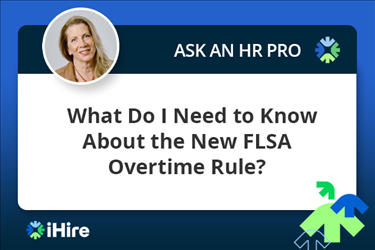- Employer Resources
- |
- Last Updated: February 08, 2023

Create an Employee Referral Program in 5 Steps
Hiring managers and HR representatives in numerous industries are embracing the idea of using employee referral programs to find high-quality candidates and expedite their recruiting efforts. It’s easy to see why. Implementing an employee referral program (also called an associate referral program) is a low-cost strategy that enables organizations to use their staff members as recruiters and take advantage of their networks to create a talent pipeline. It’s a cost-effective approach that consistently produces better hires in shorter timeframes than traditional talent acquisition methods.
As popular as this tactic has become, many HR reps still need to be educated on employee referral program best practices. If you’re having trouble recruiting top performers and are interested in launching a referral-based initiative, read on to learn how you can bring your employee referral program ideas to fruition.
Step One – Planning & Goal Setting
As with any endeavor, the first thing you must do is settle on a specific goal. Are you seeking to hire a large number of new recruits or do you need to bring a select number of upper-level managers on board? Is your objective to reduce the amount of money spent on recruiting? Do you want to cut the number of days it takes to fill open positions? Before you can begin working on how you will set up your associate referral program you must first answer why it’s needed in the first place.
Step Two – Executive Buy-In
Once you’ve decided on the specific goal(s) that will drive your associate referral program, the next thing that has to be done is to secure executive support. Company culture starts at the top, so if you don’t sell your employee referral program ideas to senior leadership first it will be more difficult to get your initiative off the ground. Promote the benefits of referral hiring and make a clear business case, citing the fact that referrals produce higher ROI than traditional hiring methods as well as higher-quality applicants, longer retention, and shorter time-to-hire.
Step Three – Process Development
Building an associate referral program from the ground up can be difficult, but it’s important to have policies and procedures in place before you launch the initiative. Key decisions will need to be made regarding how you will promote job opportunities, how your employees will be able to make referrals, and how you will recognize and incentivize program participants. Simplicity is critical—if your employee referral program is overly complicated, you will be less likely to get the amount of engagement you seek.
Step Four – Get the Word Out
After you’ve laid the groundwork for your employee referral program by setting specific goals, getting buy-in from senior leadership, and implementing a simple recommendation and application process, you’ll need to make your staff aware of its existence. If you’ve done a good job on the first three steps, this should be a breeze. While promoting your employee referral program, you can also take this opportunity to go over how to use the system, describe the types of candidates your company is looking for, and set expectations for participants and their referrals.
Step Five – Track Performance & Recognize Contributors
You might think that the hard work is done once you’ve gotten your employee referral program off the ground, but it’s really just begun. To show your project’s value, you must measure its impact on your organization. Track key metrics like referral retention, time-to-hire, recruiting costs, and likelihood of rehire after six months/one year. You also need to recognize associates who have contributed to the program’s success. There are many types of rewards you can provide—and whether or not you go with monetary rewards is completely up to you—but it’s essential that you acknowledge individuals for their involvement and show gratitude for their participation.
There’s a ton of research available showing that referrals make the best hires, but a lot of organizations don’t know much when it comes to employee referral program best practices. If you follow the five steps described above, you’ll increase your chances for success and avoid many of the pitfalls that can potentially sabotage your efforts.
Sources:
Recruiterbox – Employee Referral Program Tips that Actually Work
Jason Buss – The Top 20 Employee Referral Program Best Practices
iCIMS – Creating a Successful Employee Referral Program

Originally Published: October 31, 2016




